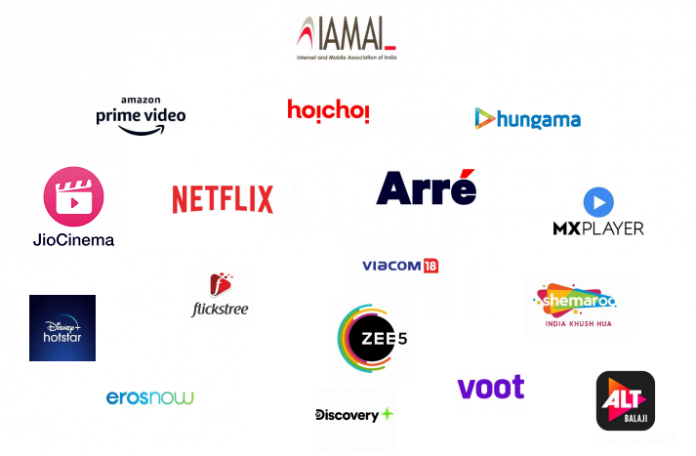This article is written by Astha Jain, who is pursuing a Certificate Course in Media and Entertainment Laws: Contracts, Licensing and Regulations from LawSikho.
Table of Contents
Introduction
In the past two decades, the audiovisual field has undergone so many technological advances at a fast pace. The source of entertainment of moving pictures has moved from films to television and currently to the internet. This medium has a huge impact on society which forms the basis of its regulation by the State. The changes in the mediums that are used to disseminate audiovisual content and the changes in society are linked. Freedom of choice, portability and increased accessibility has inculcated new habits of content consumption and have changed the perception of the people of time and space.
Over-the-top (OTT) media services have revolutionised the television-watching experience. OTT platforms include platforms such as Amazon Prime, Hotstar, Netflix. They also include subscription-based audio or video hosting services that are majorly involved in streaming feature films, web series, documentaries, etc. In India, this revolution has led to a policy vacuum. India is a diverse country in terms of caste and language, religion, economic status, and the issue of content regulation has always been important in India. Content regulation in India has been given shape by three key policy players. They are the government, industry, and the courts. The government of India by way of notification has brought OTT platforms, films and audio-visual programs, current affairs, and news on online platforms under the ambit of the Ministry of Information and Broadcasting.
The current regulatory framework
In India, the content is regulated by the provisions of the Information Technology Act, 2000, Indian Penal Code, 1860. It is also regulated by special legislation such as the Emblems and Names (Prevention of Improper Use) Act, 1950, Scheduled Castes and Scheduled Tribes (Prevention of Atrocities) Act, 1989, and the Indecent Representation of Women (Prohibition) Act, 1986, etc. An example is that the OTT service providers have to ensure that the content that is available on their platform is in compliance with Sections 67A, 67B, and 67C of the Information Technology Act, 2000. The above-mentioned sections provide for imprisonment and penalty for transmitting or publishing sexually explicit material, material depicting children in sexually explicit acts in electronic form, and obscene material.
No legislation existed specific to the Over The Top (OTT) industry, unlike the cinema and television industry. Cable Networks Television (Regulation) Act, 1995 and the rules laid down under it regulate Television broadcasting in India. The 1994 Rules lay down a Programme Code (‘Code’) which regulates the content on TV. According to this Code, a program can’t be transmitted through a cable service that contains anything obscene, deliberate false and suggestive innuendos and half-truths, is defamatory and against good taste or decency, contains anything against maintenance of law and order, encourages superstition or blind belief; is likely to encourage or incite violence or which promotes anti-national attitudes, etc. If any authorised officer (which includes the District Magistrate, the Commissioner of Police, etc.) discovers that the provisions of the Code have been violated, the officer has the power to seize the equipment of the offending cable operator. 
Highlighting the new rules
The notification dated November 9, 2020, has added two entries – 22A and 22B to the Government of India (Allocation of Business) Rules, 1961. These two entries are:
- Films and audiovisual programs made available by online content providers.
- News and current affairs on online platforms.
By this addition, online content in India is now regulated. This includes content from OTT platforms, news platforms, current affairs available online, and social media platforms. The rationale behind this regulation is unregulated content that is made available online with no proper regulatory mechanism with little to no scrutiny. The unregulated content on such platforms can impact the viewers including the minors. Also, there is a need for a level playing field among other online content providers. For example:
- Television, both news, and entertainment are being regulated by the Cable Networks Regulation Act (2005) respectively.
- Print media is regulated by the Press Council of India.
- Advertisements are regulated by the Advertising Standards Council of India.
- News regulations were offered by the News Broadcasters Association (NBA).
- Films are regulated by the Central Board of Film Certification (CBFC).
The online content was in need of regulation, to provide protective measures to its audience and to curb the freedom of content providers.
Significant social media intermediaries
‘Significant Social Media Intermediary’ (“SSMI”) is a new class of intermediaries that have been introduced by the 2021 IT Rules. SSMI means a social media intermediary having 5 million or more registered users in India. Intermediaries falling under this category have to adhere to additional compliances while discharging their duties. Some of these compliances are as follows:
Certain personnel have to be appointed under the 2021 IT Rules by SSMI, including a-
1. Chief Compliance Officer
The Chief Compliance Officer will be responsible for compliance and he can also be held liable for the contravention of 2021 IT Rules.
2. Nodal Contact Person
The Nodal Contact Person will be responsible for their 24×7 availability for coordination with law enforcement agencies.
3. Resident Grievance Officer
The Residence Grievance Officer is in charge of the grievance redressal. This common personnel has to be a resident of India and SSMI in order to receive communication under the 2021 IT Rules are required to have a physical contact address. This mandate of having locally present officers and having a contact address in India adds significant costs and legal risks. Extra-territorial jurisdiction is already provided by the IT Act and the IT Rules, 2021 made it easier for the courts in India to exercise jurisdiction over Intermediaries outside India.
The role of the judiciary
Nikhil Bhalla v. Union of India was one of the earliest cases heard by the Delhi High Court in 2018 asking for interference with respect to OTT platforms by the courts. It was concerned with censoring certain dialogues/scenes in “Sacred Games”, a web series by Netflix. A liberal and expansive view was taken by the court in this case and the petition was dismissed. The court stated that it doesn’t want to control anybody’s rights. Justice for Rights Foundation v. Union of India was again one of the very few noteworthy instances where the government itself argued against censorship. The courts have resisted attempts by different groups and individuals in order to bring regulation on the OTT platforms through the judicial route. The Allahabad High Court and the Calcutta High Court have dismissed petitions demanding censorship/regulation of content on OTT platforms. The applicability of the Cinematograph Act, 1952 was ruled out by the division bench of the Karnataka High Court, given the lack of specific laws governing content on OTT platforms.
International perspectives
Countries across the world are struggling with how content can be effectively regulated on OTT platforms. Broadcasting Services Act, 1992 (‘BSA’) governs the OTT sector in Australia. It is regulated through a complaints-based mechanism. The content on OTT platforms is certified according to existing categories. The complaints can be registered by Australian residents about illegal or offensive online content. Australian Communications and Media Authority (‘ACMA’) then investigate the valid complaints and action is taken on the content determined as “prohibited content” or “potential prohibited” content. In Singapore, categories are enumerated in its content code for OTT services. Singapore allows the OTT platforms to offer content of certain categories only if they provide for a built-in parental age/ lock verification system.
The Australian Classification Board is responsible for categorising both offline as well as online content so far. Netflix can assess content and generate a rating on its own which will be followed by a two-year trial period. Netflix has been allowed by the British Board of Film Classification (‘BBFC’) in the United Kingdom to classify its own material. After this, Netflix can use the official British age rating symbols on its content. Recently, it reached 100% coverage which means all of its content displays the BBFC ratings.
Conclusion
The content that is made available to more than 2 million users daily, resonates with the nature of Indian society. It resonates in terms of caste, religion, economic status, societal norms/behavior, language, and caste. Thus, this issue of content regulation is crucial and it is governed by how it affects society. There is a need for the stakeholders and government to come together for introducing legislation with a proper framework in order to balance out the necessary restrictions and freedom of expression for the sake of law and order.
The creative freedom of the content creators/makers can be influenced by the excess restriction and guidelines which in turn will influence the viewership of OTT platforms. The new-age content makers by their content are breaking all the moral stereotypes and the digital media’s fate is under the hands of the Ministry of Information and Broadcasting which leaves little hope for the actors and the content makers. Though developing a legal framework for OTT regulation is still a work in progress, the government’s manner and extent of content censorship would decide this digital revolution’s fate.
Students of LawSikho courses regularly produce writing assignments and work on practical exercises as a part of their coursework and develop themselves in real-life practical skills.
https://t.me/joinchat/J_0YrBa4IBSHdpuTfQO_sA
Follow us on Instagram and subscribe to our YouTube channel for more amazing legal content.
 Serato DJ Crack 2025Serato DJ PRO Crack
Serato DJ Crack 2025Serato DJ PRO Crack










 Allow notifications
Allow notifications



